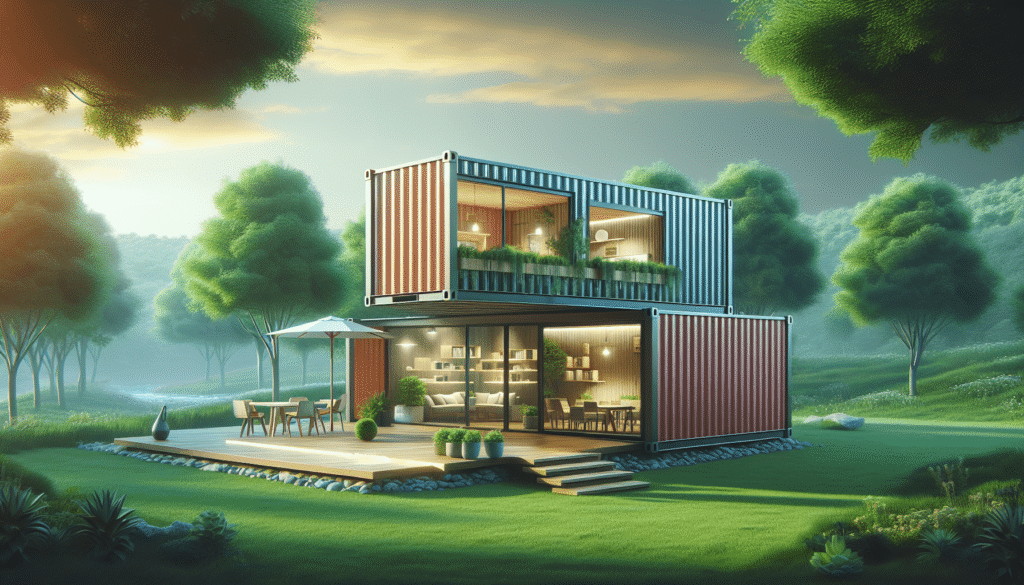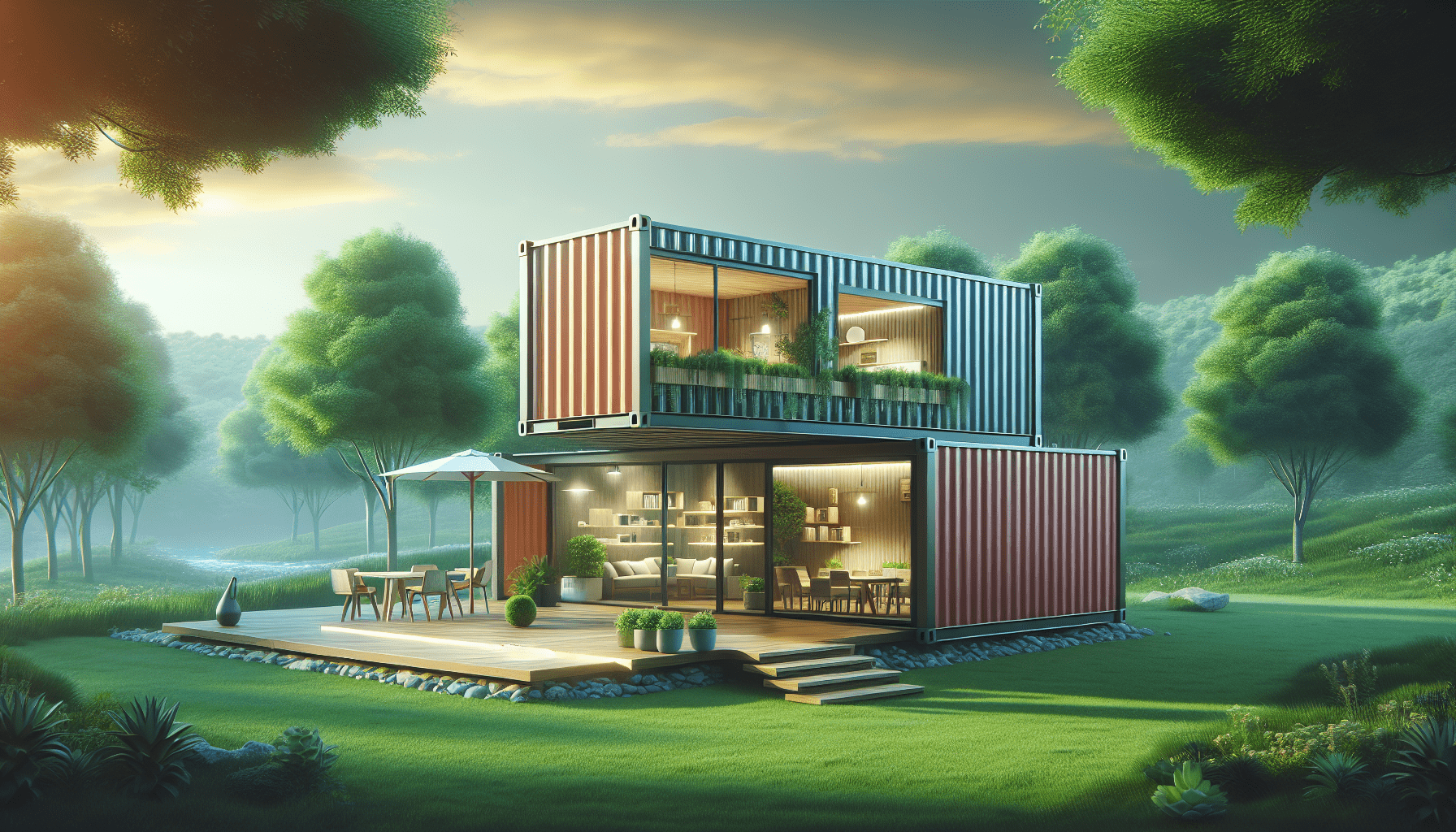Have you ever thought about the myriad possibilities hiding within a simple shipping container? Picture this: a shipping container transformed into a cozy, innovative home. It’s a trend that’s capturing the hearts of adventurous and eco-conscious individuals alike. But, where should you build such a unique home? Choosing the right location is crucial to your shipping container home adventure, as it dictates not only the lifestyle you’ll lead but also the challenges of construction and habitation you might face. Let’s travel through some key considerations and potential locations for your future container dwelling.

Understanding Shipping Container Homes
Shipping container homes are exactly what they sound like—homes made out of steel shipping containers. They offer a unique blend of modern flair and practical design, often found in architectural magazines for their quirky yet practical structure. The modular nature of these containers means they can be adapted to fit almost any space, budget, and environmental need.
Why Choose a Shipping Container Home?
These homes are more than just trending; they’re practical and often cost-effective. Container homes are usually quicker to build and can be more affordable than traditional house construction. Moreover, they can be sustainable options since they are made from recycled materials. Considerations such as climate adaptability, durability, and versatility make them an attractive alternative to conventional housing.
Legal Considerations and Zoning Laws
Before you purchase a piece of land for your container home, understanding zoning laws and building codes is crucial. These determine what you can and cannot build upon your land.
Zoning Regulations
Every city or region has its own zoning regulations that govern the types of structures that can be built, and in which areas. Some places may have restrictions on the type of residential buildings allowed or specific design codes that need to be met. Understanding these ahead of time will save you time and potential legal headaches.
Building Codes
Beyond zoning, building codes play a critical role. These could pertain to the structural integrity of your home, insulation requirements, or even energy efficiency standards. Checking with your local authorities or a local architect can provide clarity on what exactly will be required for your shipping container home.
Climate Considerations
The allure of shipping container homes lies partly in their ability to be constructed in various environments. However, the climate of your chosen location will impact your container home in significant ways.
Managing Temperature Fluctuations
Shipping containers are made of steel, which can conduct heat and cold if not properly insulated. In hot climates, your container home might become sweltering, whereas in cold climates, it could become unliveable without proper insulation. Understanding and planning for these temperature variances is key.
Weather Resistance
Shipping containers are robust by design; after all, they’re built to withstand tough conditions at sea. However, different environmental factors such as heavy rain, snow, and wind in your area might require additional reinforcements or design adjustments.
Potential Locations for Building
With the important bases covered—zoning laws, climate, and construction—you can now consider possible locations to make your shipping container home a reality. Here’s a list of appealing options, each with its own unique benefits:
Urban Areas
Pros:
- Access to utilities and amenities.
- Potential for creative urban designs.
- Greater access to construction services and materials.
Cons:
- Zoning restrictions may be stricter.
- Higher land costs.
- Possible limitations on home size or style.
Urban centers provide vibrant community life and convenience. In cities where land is at a premium, cleverly designed container homes can fit in slim plots or make use of vertical space efficiently.
Suburban Neighborhoods
Pros:
- Often have larger lots than urban areas.
- Close to necessary amenities without the hustle and bustle.
- Fewer zoning restrictions compared to urban centers.
Cons:
- More regulations than rural areas.
- Potential for less privacy.
In suburbia, you have space to explore sophisticated design, making your home a quiet retreat while still enjoying proximity to shopping, dining, and other cultural experiences.
Rural Countryside
Pros:
- Potentially cheaper land and fewer zoning restrictions.
- Abundant space and a serene natural environment.
- Greater freedom in design and construction.
Cons:
- Access to utilities may be limited.
- Farther from services like healthcare and shopping.
- Infrastructure for road access might be lacking.
Building in a rural setting offers solitude and tranquility, perfect for those who love the outdoors and self-sufficiency. Creativity in off-the-grid solutions for power and waste management is often a stimulating challenge.
Coastal Areas
Pros:
- Stunning views and access to water-based recreation.
- Potential for unique and appealing designs.
Cons:
- Higher potential for severe weather.
- Stringent building codes for flood zones.
- Potentially higher insurance costs.
Living by the water harnesses the natural beauty and relaxing lifestyle of coastal living. However, careful consideration of environmental challenges is necessary to protect your investment.
Eco-Friendly Communities
Pros:
- Shared resources for sustainable living.
- Community support and sustainable practices.
- Opportunities to learn and implement green technologies.
Cons:
- Rules and restrictions within the community.
- May require membership or participation in community programs.
Eco-friendly communities often welcome innovative housing solutions, making this a perfect choice for those passionate about sustainability and community-focused living.

Permits and Approvals
Navigating the world of permits and approvals can feel overwhelming, but preparing in advance will ease the process.
Building Permits
Your local authority will usually require building permits for new constructions. Ensure you have all necessary documents and approvals to avoid future issues and additional costs.
Environmental Impact Assessments
In some regions, especially coastal or eco-sensitive areas, environmental impact assessments may be necessary. These assess potential effects your build could have on the local ecosystem.
Connecting Utilities
An essential part of planning your container home location is ensuring you’ll have access to necessary utilities. This includes electricity, water, and sewage. In urban and suburban locations, this will typically mean setting up connections with local providers. In rural or off-the-grid areas, you might explore alternative options such as solar panels or rainwater collection.
Designing Your Container Home
With your location chosen, it’s time to think about the design possibilities your container home offers.
Space Planning
Efficient space planning is crucial. Remember that shipping containers have limited space, but creative layouts can maximize every square foot. Consider the orientation of your house to take advantage of natural light and views present in your location.
Sustainable Design Choices
Opt for sustainable materials and energy-efficient appliances for a greener home. The choice of insulation has a huge impact on energy consumption, especially if you’re in an area with extreme temperatures.
Aesthetic Considerations
Just because your home is made of metal doesn’t mean it can’t be beautiful. Thoughtful finishes, flora, and outdoor spaces can make your container home not only functional but also aesthetically pleasing.
Budgeting and Construction
Finally, it’s crucial to think about the financial side of your project.
Cost Breakdown
While the base cost of a shipping container can be lower than traditional materials, remember to factor in costs such as land purchase, permits, insulation, and customization. Here’s a simple table to consider the potential costs:
| Expense Item | Estimated Cost Range |
|---|---|
| Shipping Container | $2,000 – $6,000 per unit |
| Land Purchase | Varies widely based on area |
| Permit Fees | $500 – $2,000 |
| Insulation | $1,000 – $3,000 |
| Interior Finishing | $10,000 – $100,000+ |
Hiring Professionals
While a DIY approach is feasible, hiring architects or contractors with experience in container homes can alleviate some of the challenges and ensure the job is done smoothly.
Construction Timeline
Understanding that your build could take time is essential. Account for potential delays due to weather, permits, or construction supply shortages.
Conclusion
Creating a shipping container home is an exciting journey that offers both adventure and a sense of satisfaction in owning a unique, sustainable living space. By considering legal, geographical, and personal lifestyle needs, you’re well on your way to finding the perfect spot to bring your dream home to life. Imagine waking up each day in a space that reflects both your values and style, positioned in a location that enhances your daily life. Now that’s a home that’s truly yours!

